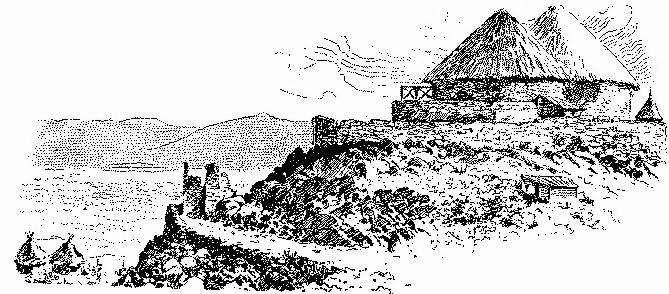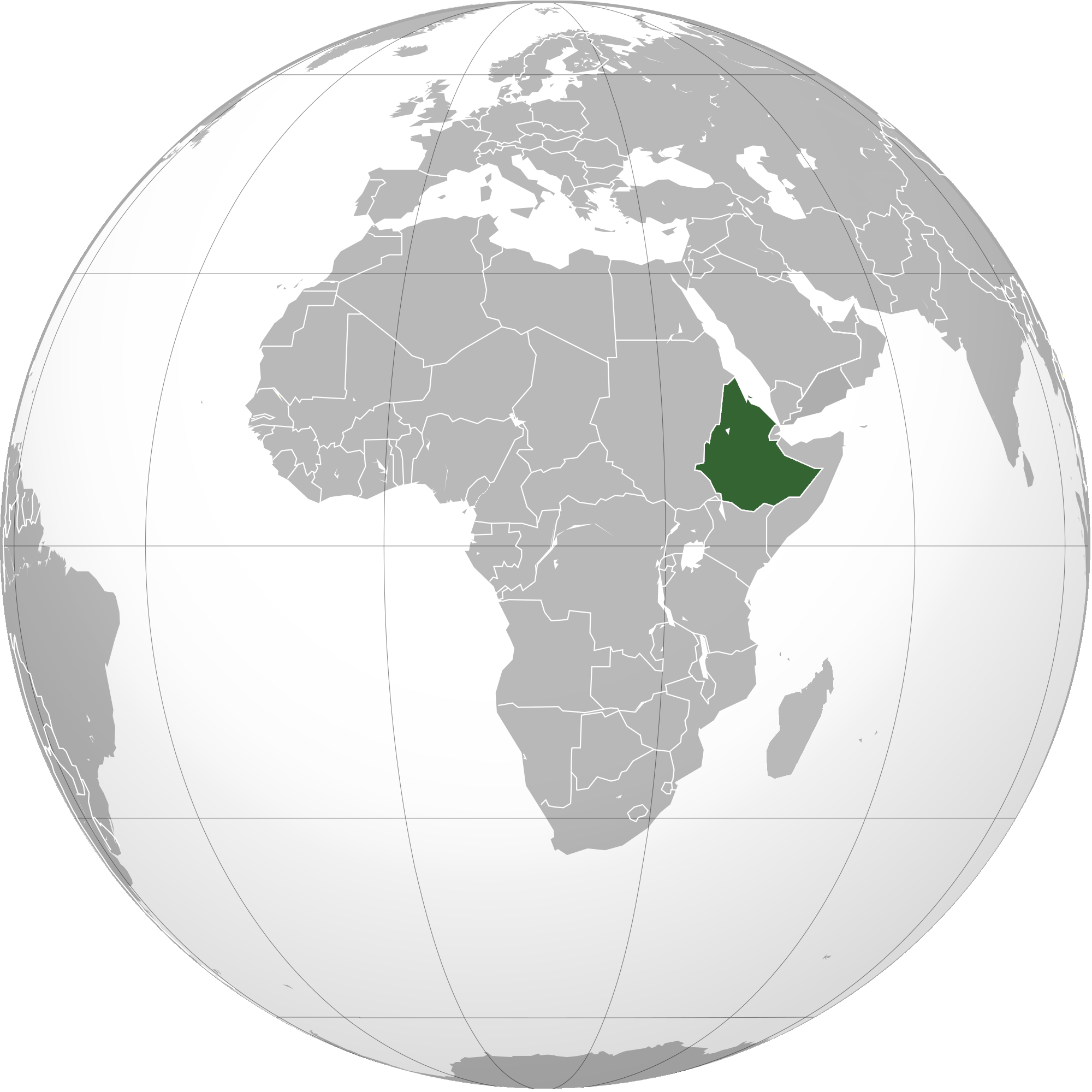|
Battle Of Gundet
The Battle of Gundet was fought from 14-16 November 1875 between the Ethiopian Empire and the Khedivate of Egypt in Eritrea. It was the first major battle of the Ethiopian–Egyptian War. The battle The Egyptians under Arakil Bey and Danish Colonel Adolph Ahrendrup invaded from their coastal possessions in Massawa, in what is now Eritrea. Following some skirmishes, the armies of Yohannes and Isma'il met at Gundet on the morning of 14 November 1875. Not only were the Egyptians vastly outnumbered, they were also taken completely by surprise as they were marching through a narrow mountain pass. The mass of Ethiopian warriors sallied forth from their hiding places up the slope and swiftly charged down upon the shocked Egyptian columns, nullifying the latter's advantage in firepower and causing many of the unenthusiastic fellahin soldiers to rout. This encounter ended on the 16th in the complete annihilation and routing of the Egyptian expeditionary force led by Colonel Arrendrup an ... [...More Info...] [...Related Items...] OR: [Wikipedia] [Google] [Baidu] |
Seraye
Seraye is the name of a former province of Eritrea. It has since been incorporated primarily into the Debub Region, though some western districts have become part of the Gash-Barka Region. The province was located west of Akele Guzai, south of Hamasien and north of Tigray. History Even though Seraye has yielded fewer archaeological findings than the other two historical regions, Seraye is likely one of the oldest sites of Semitic settlement in the Eritrean highlands. This is suggested by the similarity of its name to South-Arabian place names, possibly due to Semitic immigrants from South Arabia (e.g., Sarwàn, Saràt, in the mountains of Yemen). Additionally, the rock inscription of Séhuf Émni in Qwahayn, written in Epigraphic South Arabian script indicates the region's significance during this period. During the 9th century, Beja clans (who were also known Balaw or Belew, known locally as ''Belew Kelew'') came to form the major ruling class in what would become Seraye an ... [...More Info...] [...Related Items...] OR: [Wikipedia] [Google] [Baidu] |
Mereb Melash
Medri Bahri ( Tigrinya: ምድሪ ባሕሪ, English: ''Land of the Sea'') or Mereb Melash (Tigrinya: መረብ ምላሽ, English: ''Beyond the Mereb''), also known as Baharanegash, Ma'ikele Bahr or Bambolo Melash was a semi-autonomous province of the Ethiopian Empire ruled by the ''Bahr Negash''. This province was located north of the Mareb River and west of the Bur Province, in the Eritrean highlands ( Kebassa) and some surrounding areas, mainly comprising the historical provinces of Hamasien and Seraye. History According to historian Richard Pankhurst it was during the reign of Emperor Zara Yaqob (r. 1433–1468) when the title ''Bahr Negash'' ("Ruler of the sea") appeared for the first time. However, it also appears in an obscure land grant of the Zagwe King Tatadim, who ruled during the 11th century. He considered the unnamed Bahr Negash as one of his ''seyyuman'' or "appointed ones". Zara Yaqob's chronicle explains how he, after arriving to the region, put much effort i ... [...More Info...] [...Related Items...] OR: [Wikipedia] [Google] [Baidu] |
Khedivate Of Egypt
The Khedivate of Egypt ( or , ; ') was an autonomous tributary state of the Ottoman Empire, established and ruled by the Muhammad Ali Dynasty following the defeat and expulsion of Napoleon Bonaparte's forces which brought an end to the short-lived French occupation of Lower Egypt. The Khedivate of Egypt had also expanded to control present-day Sudan, South Sudan, Eritrea, Djibouti, northwestern Somalia, northeastern Ethiopia, Lebanon, Jordan, Israel, Palestine, Syria, Greece, Cyprus, southern and central Turkey, in addition to parts from Libya, Chad, Central African Republic, Democratic Republic of Congo, and Uganda, as well as northwestern Saudi Arabia, parts of Yemen and the Kingdom of Hejaz. The United Kingdom invaded and took control in 1882. In 1914, the Ottoman Empire connection was ended and Britain established a protectorate called the Sultanate of Egypt. History Rise of Muhammad Ali Upon the conquest of the Mamluk Sultanate by the Ottoman Empire in 1517, t ... [...More Info...] [...Related Items...] OR: [Wikipedia] [Google] [Baidu] |
Yohannes IV
Yohannes IV ( Tigrinya: ዮሓንስ ፬ይ ''Rabaiy Yōḥānnes''; horse name Abba Bezbiz also known as Kahśsai; born ''Lij'' Kahssai Mercha; 11 July 1837 – 10 March 1889) was Emperor of Ethiopia from 1871 to his death in 1889 at the Battle of Gallabat, and king of Tigray from 1869 to 1871. During his reign he successfully defended Ethiopia against a large-scale Egyptian invasion. In his earlier years, he rebelled against Tewodros II; having risen to power in the 1860s, he maintained the policy of Tewodros, that of continued unification and also implemented a policy of touring entire regions and meetings with governors. He assisted the British in their British expedition to Abyssinia which ended in Tewodros' suicide, from which Yohannes was rewarded in ammunition and artillery. He regarded Islam as a hindrance to the stability of the state and worked to strengthen Christian dominance in Ethiopia. Its estimated that he had converted 550,000 Oromos and Jebertis to Chri ... [...More Info...] [...Related Items...] OR: [Wikipedia] [Google] [Baidu] |
Alula Engida
Ras Alula Engida () (1845 – 15 February 1897; also known by his horse name Abba Nega and by Alula Equbi) was an Ethiopian general and politician who successfully led battles against Ottoman Egypt, the Mahdists and Italy. He was one of the most important leaders of the Abyssinian forces during the 19th century. Described by Haggai Erlich as the "greatest leader whom Ethiopia produced since the death of Emperor Tewodros II in 1868." Ras Alula was referred to by Europeans as "the Garibaldi of Ethiopia". Early years Alula was born in Mennewe, a village in Tembien, the son of Engda Eqube, a farmer of modest origins. Haggai Erlich relates a story about Alula's childhood – "well known throughout Tigray": a group of people carrying baskets of bread to a wedding ceremony were stopped by a group of children led by the future ''Ras'', who demanded to know where they were going. "To the Castle of Ras Alula Wadi Equbi," they mockingly replied. "Thereafter," concludes Erlich, "his f ... [...More Info...] [...Related Items...] OR: [Wikipedia] [Google] [Baidu] |
Ethiopian Empire
The Ethiopian Empire, historically known as Abyssinia or simply Ethiopia, was a sovereign state that encompassed the present-day territories of Ethiopia and Eritrea. It existed from the establishment of the Solomonic dynasty by Yekuno Amlak around 1270 until the 1974 Ethiopian coup d'état, 1974 coup d'état by the Derg, which ended the reign of the final Emperor, Haile Selassie. In the late 19th century, under Emperor Menelik II, the Menelik II's conquests, empire expanded significantly to the south, and in 1952, Federation of Ethiopia and Eritrea, Eritrea was federated under Selassie's rule. Despite being surrounded by hostile forces throughout much of its history, the empire maintained a kingdom centered on its Orthodox Tewahedo, ancient Christian heritage. Founded in 1270 by Yekuno Amlak, who claimed to descend from the last Kingdom of Aksum, Aksumite king and ultimately King Solomon and the Queen of Sheba, it replaced the Agaw people, Agaw Zagwe Kingdom, kingdom of the Za ... [...More Info...] [...Related Items...] OR: [Wikipedia] [Google] [Baidu] |
Eritrea
Eritrea, officially the State of Eritrea, is a country in the Horn of Africa region of East Africa, with its capital and largest city being Asmara. It is bordered by Ethiopia in the Eritrea–Ethiopia border, south, Sudan in the west, and Djibouti in the southeast. The northeastern and eastern parts of Eritrea have an extensive coastline along the Red Sea. The nation has a total area of approximately , and includes the Dahlak Archipelago and several of the Hanish Islands. Hominid remains found in Eritrea have been dated to 1 million years old and anthropological research indicates that the area may contain significant records related to the evolution of humans. The Kingdom of Aksum, covering much of modern-day Eritrea and Tigray Region, northern Ethiopia, was established during the first or second century AD.Henze, Paul B. (2005) ''Layers of Time: A History of Ethiopia'', . It adopted Eritrean Orthodox Church, Christianity around the middle of the fourth century. Beginning in ... [...More Info...] [...Related Items...] OR: [Wikipedia] [Google] [Baidu] |
Oxford University Press
Oxford University Press (OUP) is the publishing house of the University of Oxford. It is the largest university press in the world. Its first book was printed in Oxford in 1478, with the Press officially granted the legal right to print books by decree in 1586. It is the second-oldest university press after Cambridge University Press, which was founded in 1534. It is a department of the University of Oxford. It is governed by a group of 15 academics, the Delegates of the Press, appointed by the Vice Chancellor, vice-chancellor of the University of Oxford. The Delegates of the Press are led by the Secretary to the Delegates, who serves as OUP's chief executive and as its major representative on other university bodies. Oxford University Press has had a similar governance structure since the 17th century. The press is located on Walton Street, Oxford, Walton Street, Oxford, opposite Somerville College, Oxford, Somerville College, in the inner suburb of Jericho, Oxford, Jericho. ... [...More Info...] [...Related Items...] OR: [Wikipedia] [Google] [Baidu] |
Trafford Publishing
Trafford Publishing is a book publishing company for self-publishing authors. Formerly based in Victoria, British Columbia, Canada, Trafford Publishing is now based in Bloomington, Indiana, US. History Trafford Publishing was founded in 1995 by Bruce and Marsha Batchelor, John Norris, and Steve Fisher, and specializes in print-on-demand (POD) publishing. The company prints books in short runs or on an individual basis. Bruce Batchelor was its CEO until 2006. Trafford requires authors to pay for their own marketing and the initial costs of publishing. At its largest, Trafford employed around 150 people across offices in Canada, the United States, the United Kingdom, and Ireland. The company operated its own printing facility in Victoria, Canada, and also utilized the printing services of Lightning Source Inc. (LSI), a subsidiary of Ingram Books, and BookSurge LLC for its printing needs. Trafford's services include self-publishing, online ordering, e-book conversion, and d ... [...More Info...] [...Related Items...] OR: [Wikipedia] [Google] [Baidu] |




